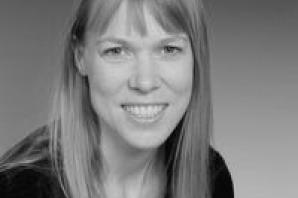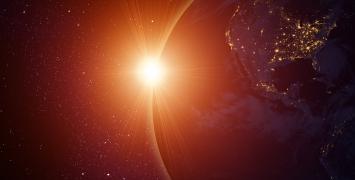Setting eyes on the dark side of the universe
More than 95% of our universe comes in the mysterious form of dark matter and dark energy that we can neither explain nor directly detect. Dr Catherine Heymans leads a team of researchers who were the first to “map” dark matter on the largest of scales. She now uses her research to confront Einstein’s theory of general relativity in an attempt to explain the nature of dark energy.

Story updated in November 2015
Early in the twentieth century, Einstein revolutionised our understanding of fundamental physics by concluding that mass can warp the very fabric of space and time. Using a powerful new astronomical technique called gravitational lensing, astronomers can directly observe the way in which the light from very distant galaxies is bent as it passes through large structures of matter in the universe.
With her FORCE project, Dr Heymans uses this light-bending effect to map the invisible dark matter in the universe. She collected the most comprehensive data from one of the world-leading surveys of the universe: the Canada-France-Hawaii Telescope Lensing Survey (CFHTLenS). When analysing the deep astronomical imaging, Dr Heymans and her team looked at the light from over ten million galaxies, some six billion light years away. Their images provided a very first glimpse of the intricate cosmic web of dark matter and galaxies, spanning more than one billion light years across.
Progress in probing and mapping the dark universe may have far-ranging implications. It is indeed widely believed that, in order to understand its nature, we will need to invoke new physics that will forever change our cosmic view, bringing into question our knowledge of fundamental physics.
By combining observations of the motion of galaxies and light in different gravitational fields, Dr Heymans’ team found their measurements to be in full agreement with Einstein’s theory of general relativity. This was the first time the theory of gravity had been tested on some of the largest cosmological scales in the universe. Dr Heymans has recently been awarded a new Consolidator grant to go one step further and inspire and confront new theories about how gravity works. She will directly test beyond Einstein theories of gravity using the first large-scale “same-sky” survey called 2dFLenS, which combines the quality of images of the European Southern Observatory Kilo-Degree Survey with wide-area spectroscopy from the Australian Astronomical Observatory.






